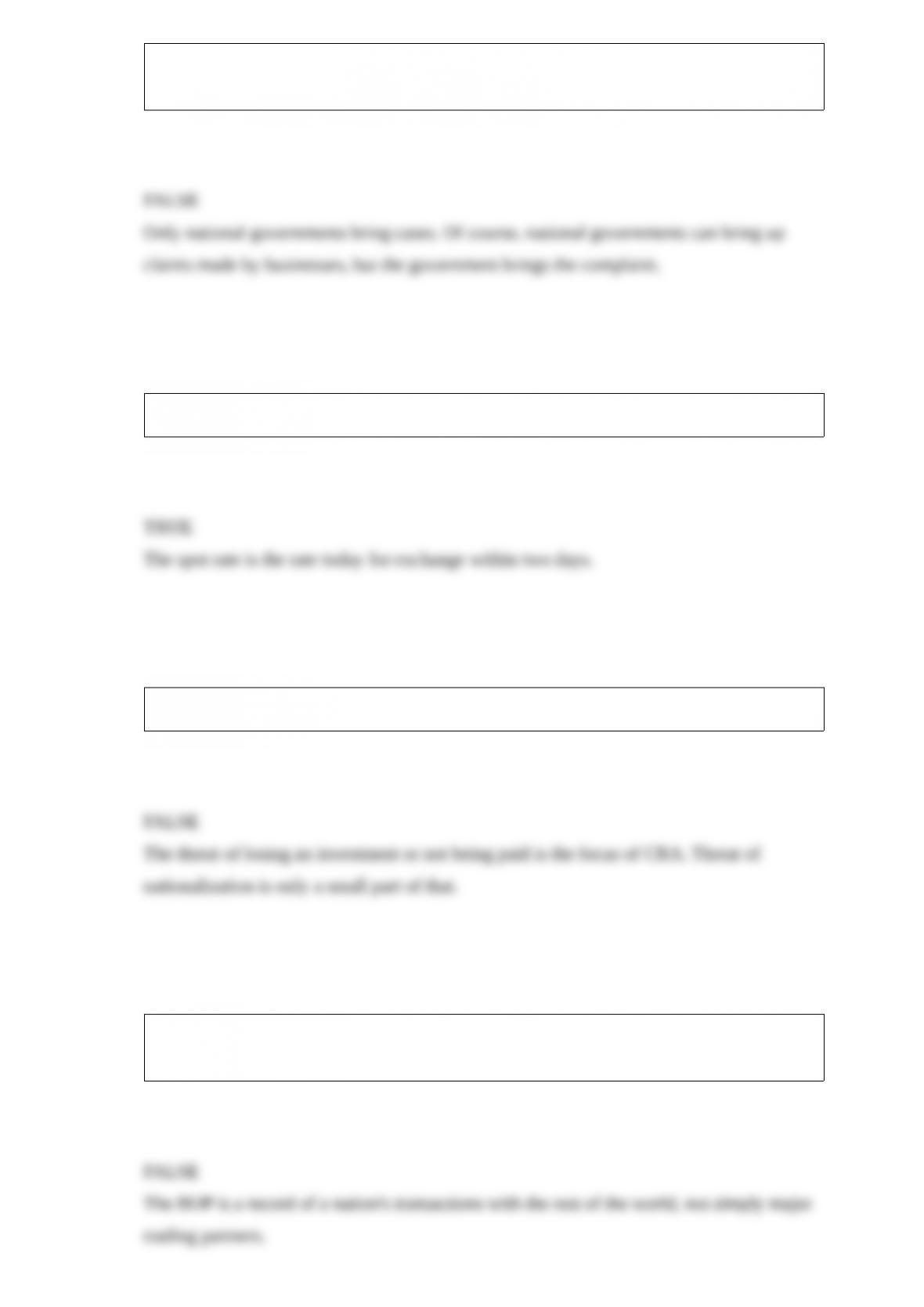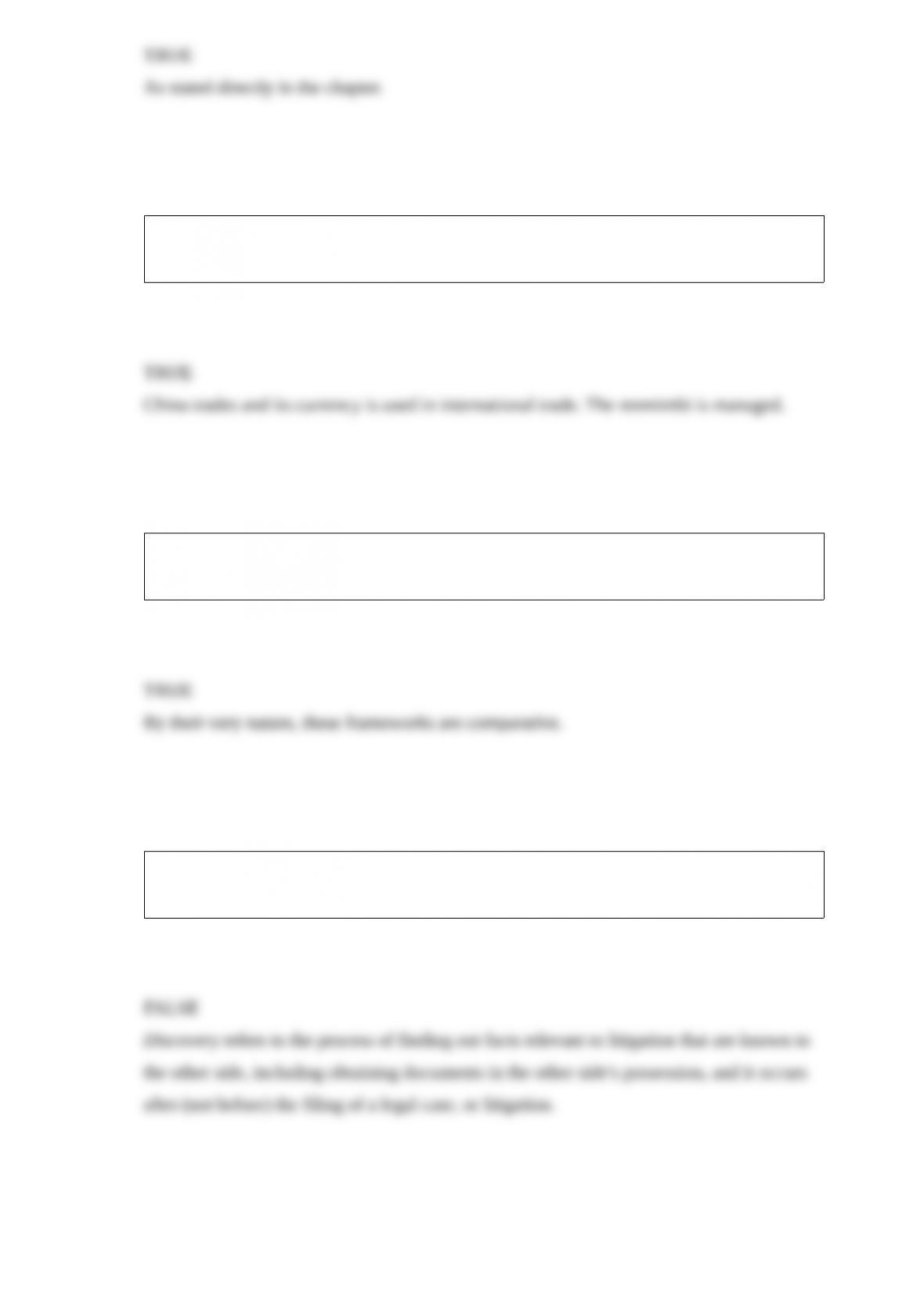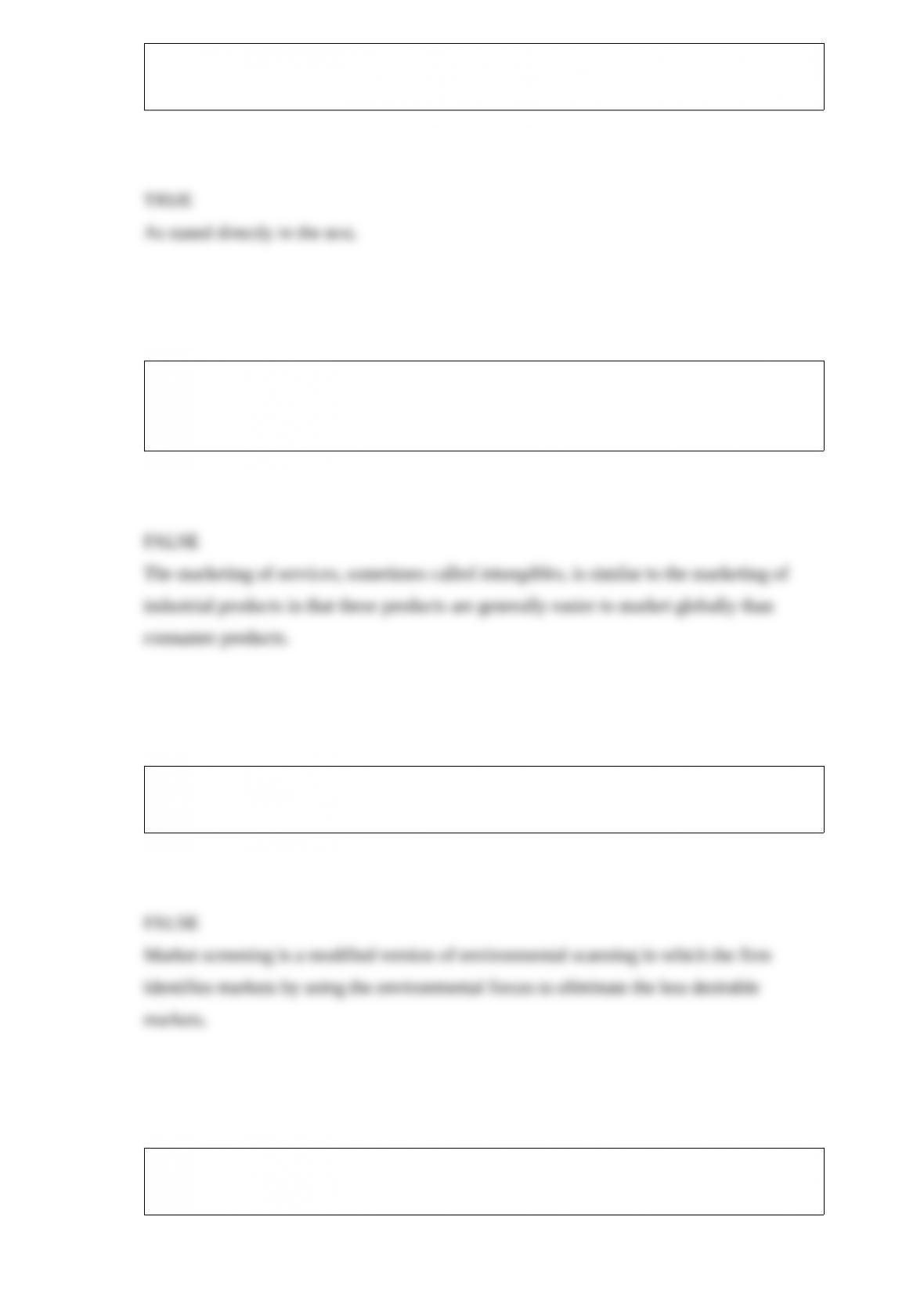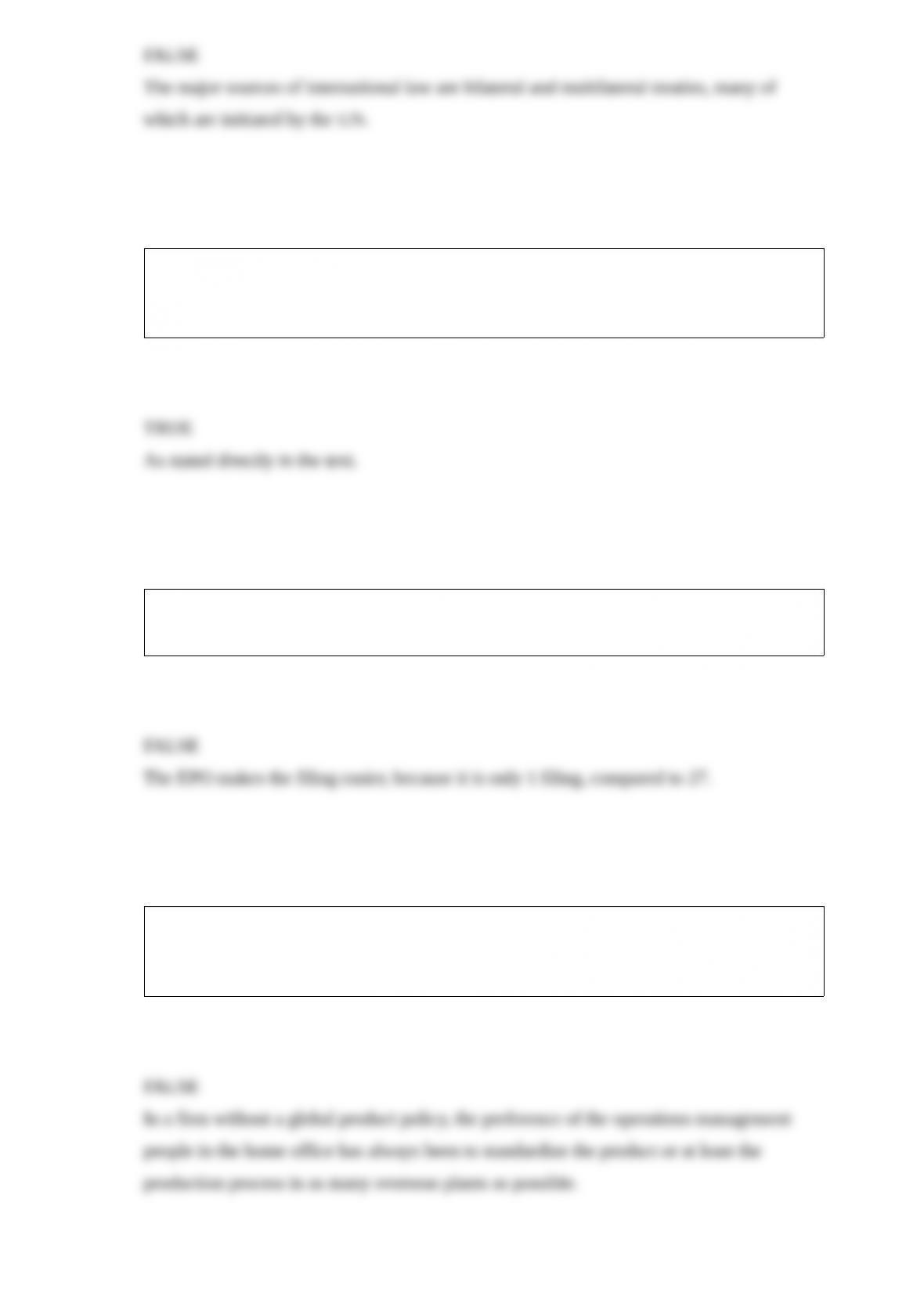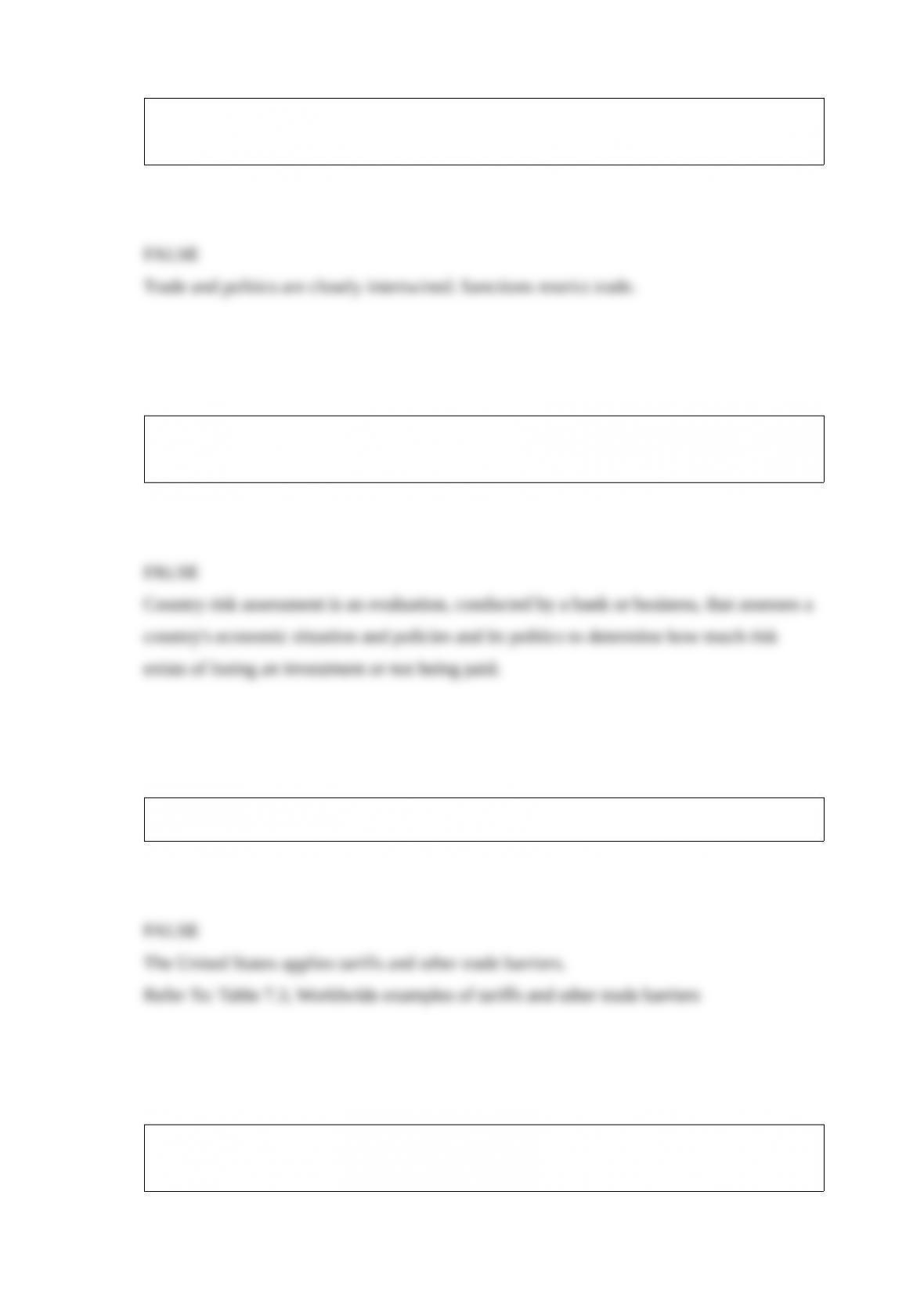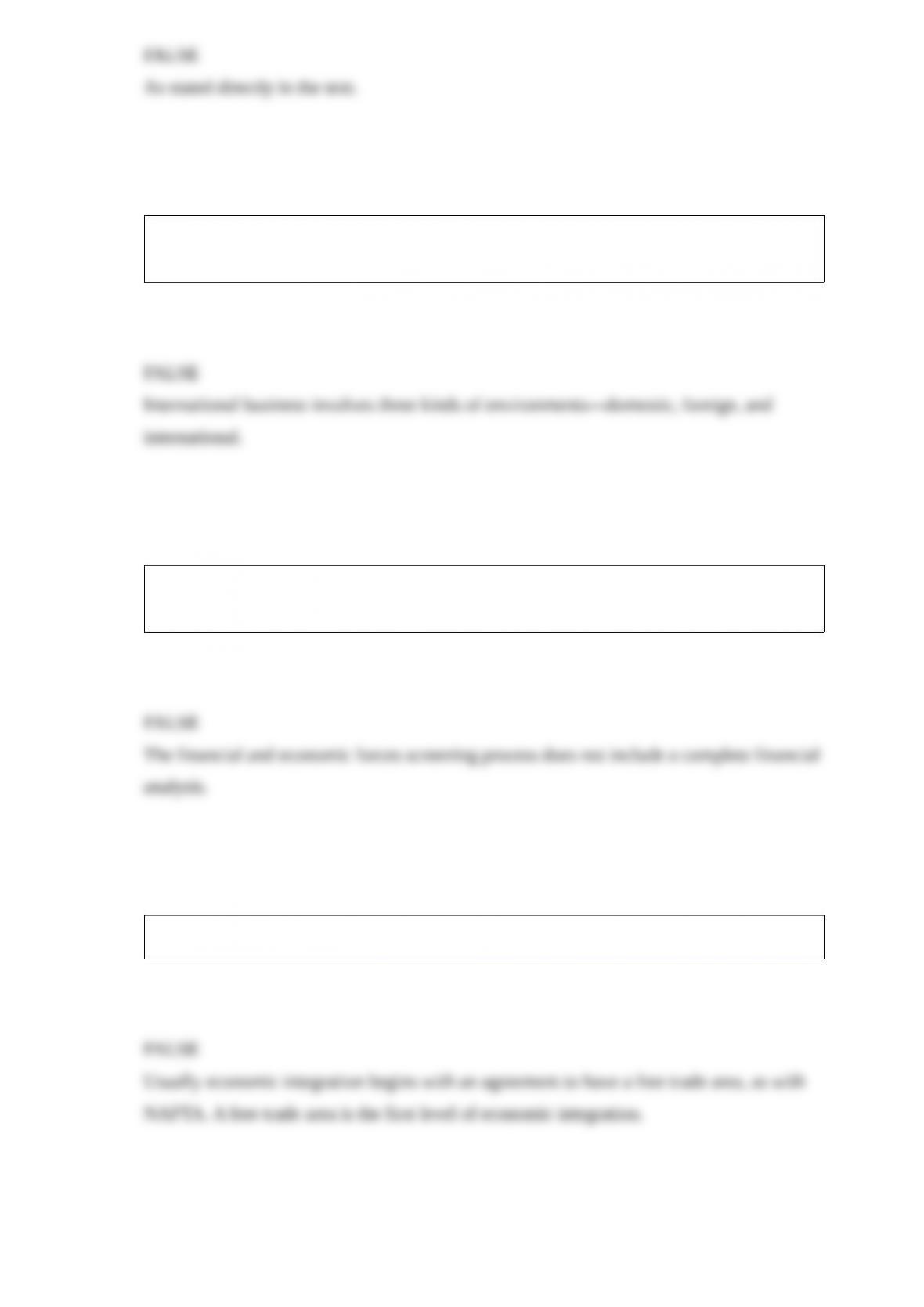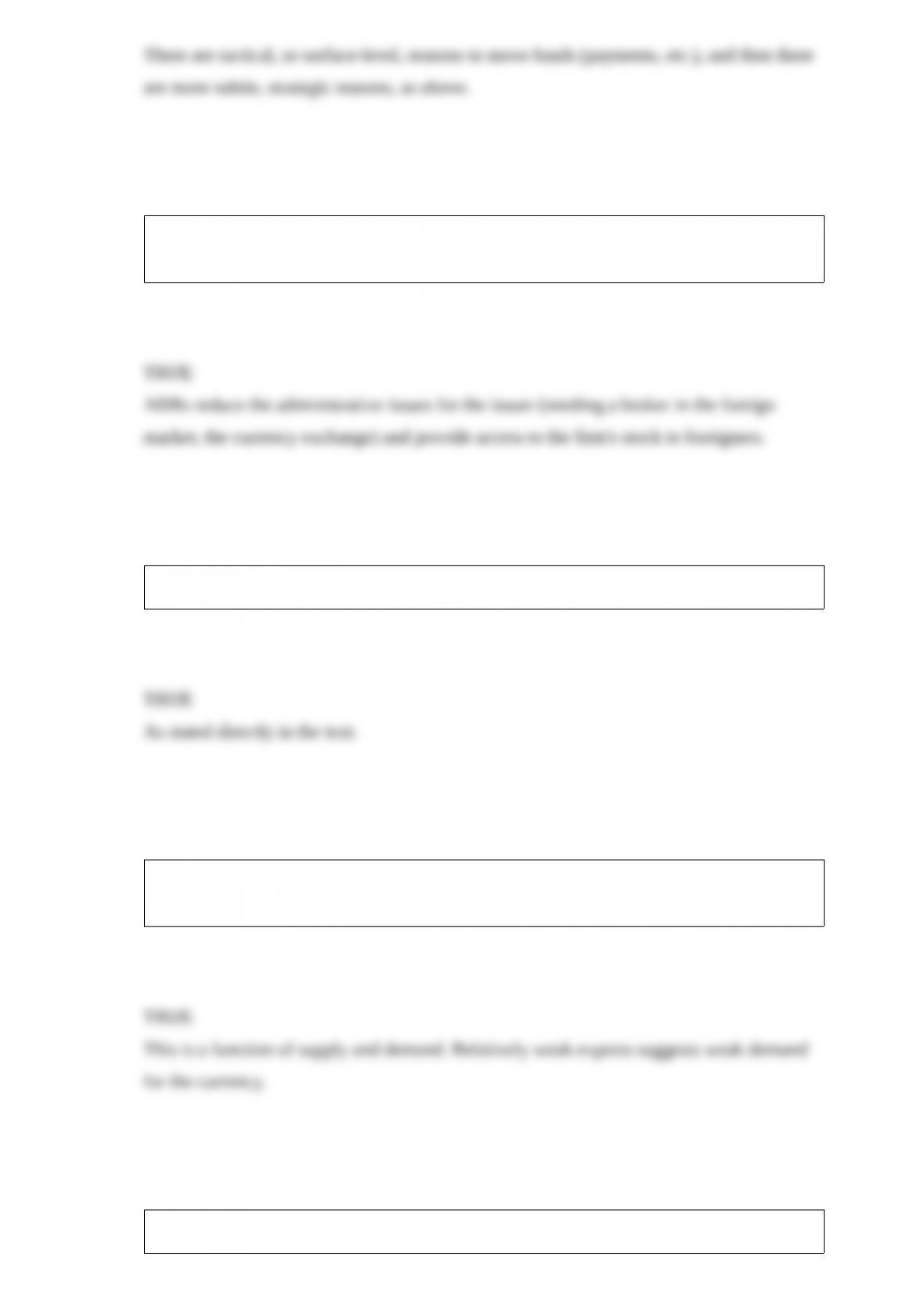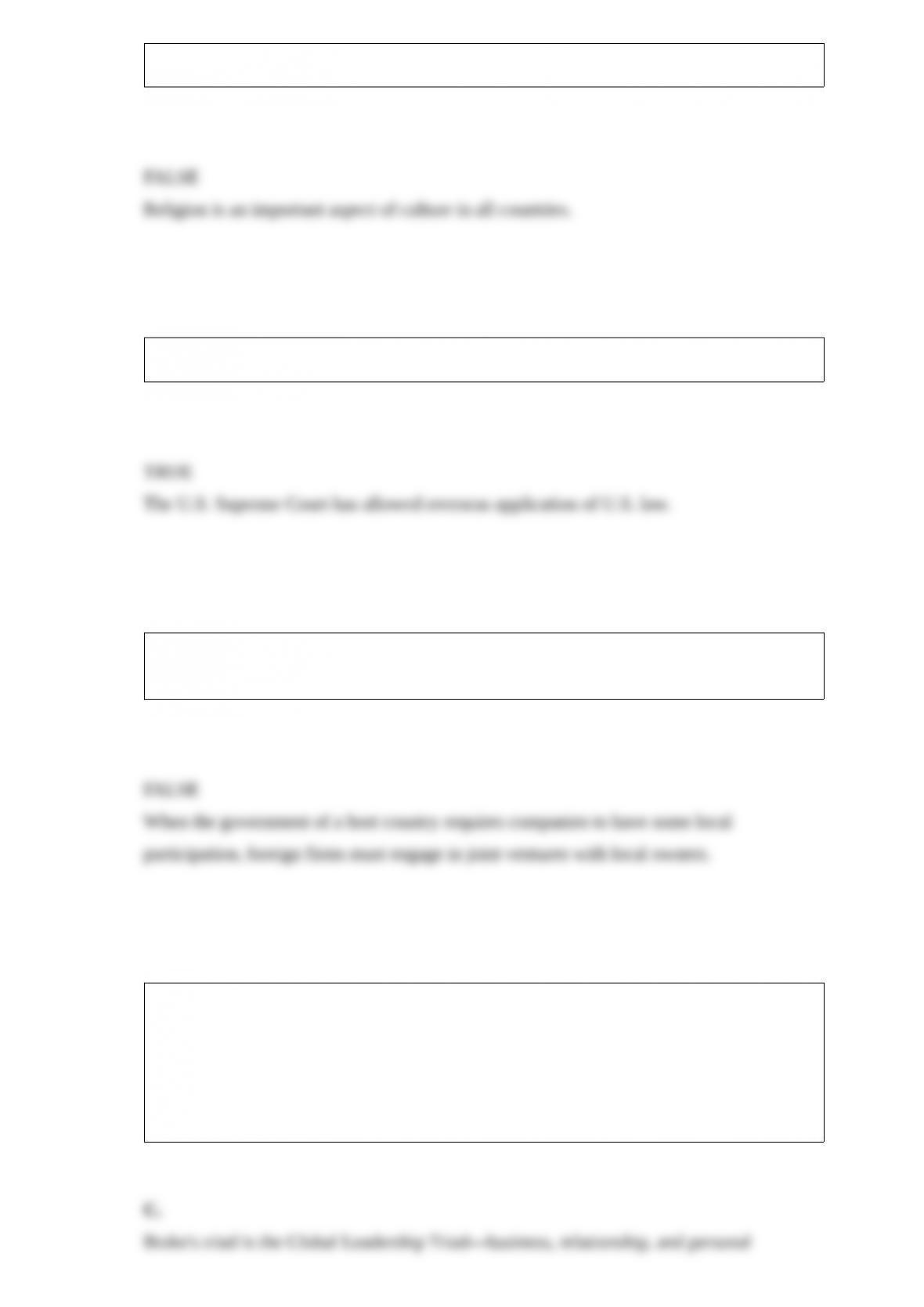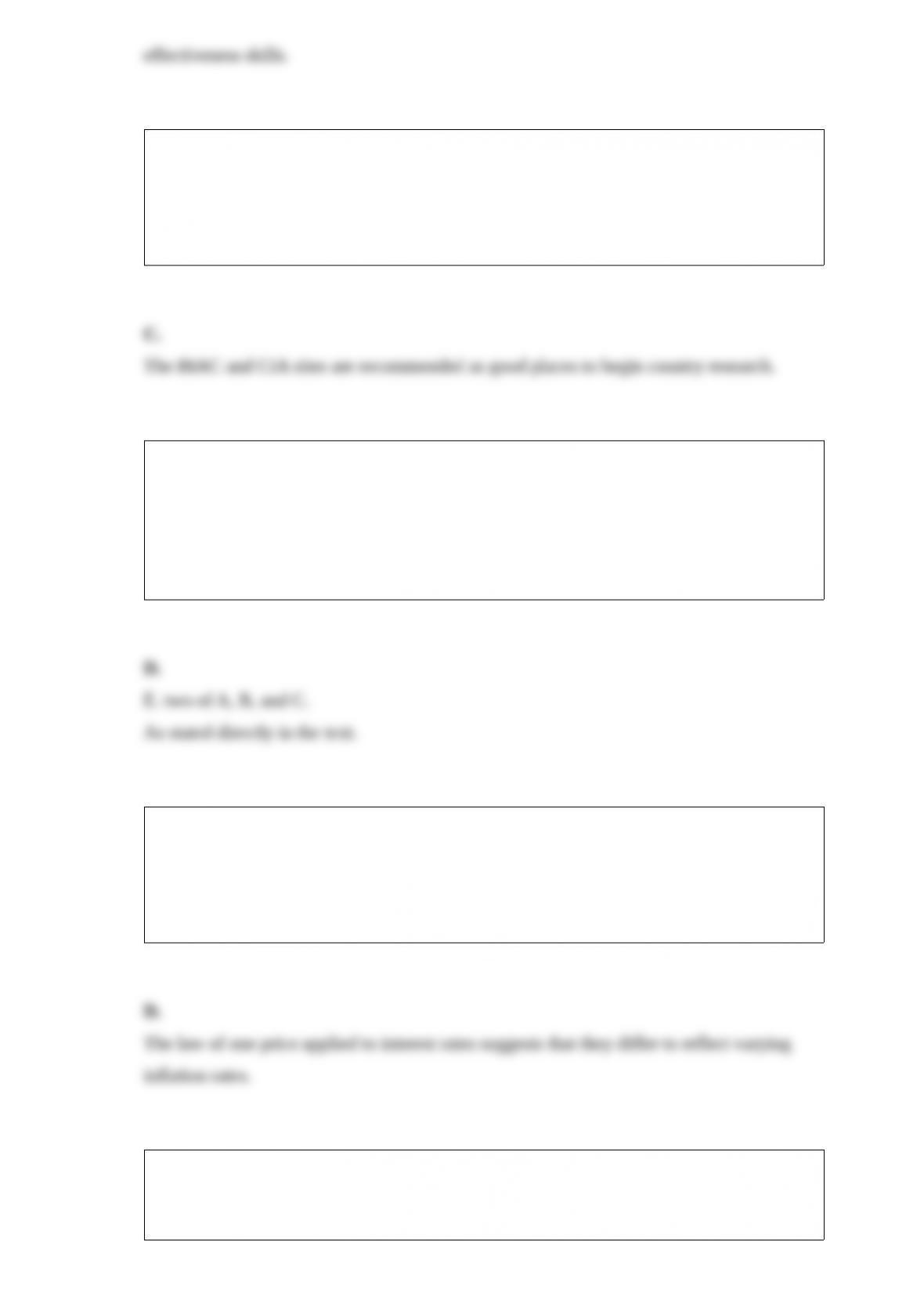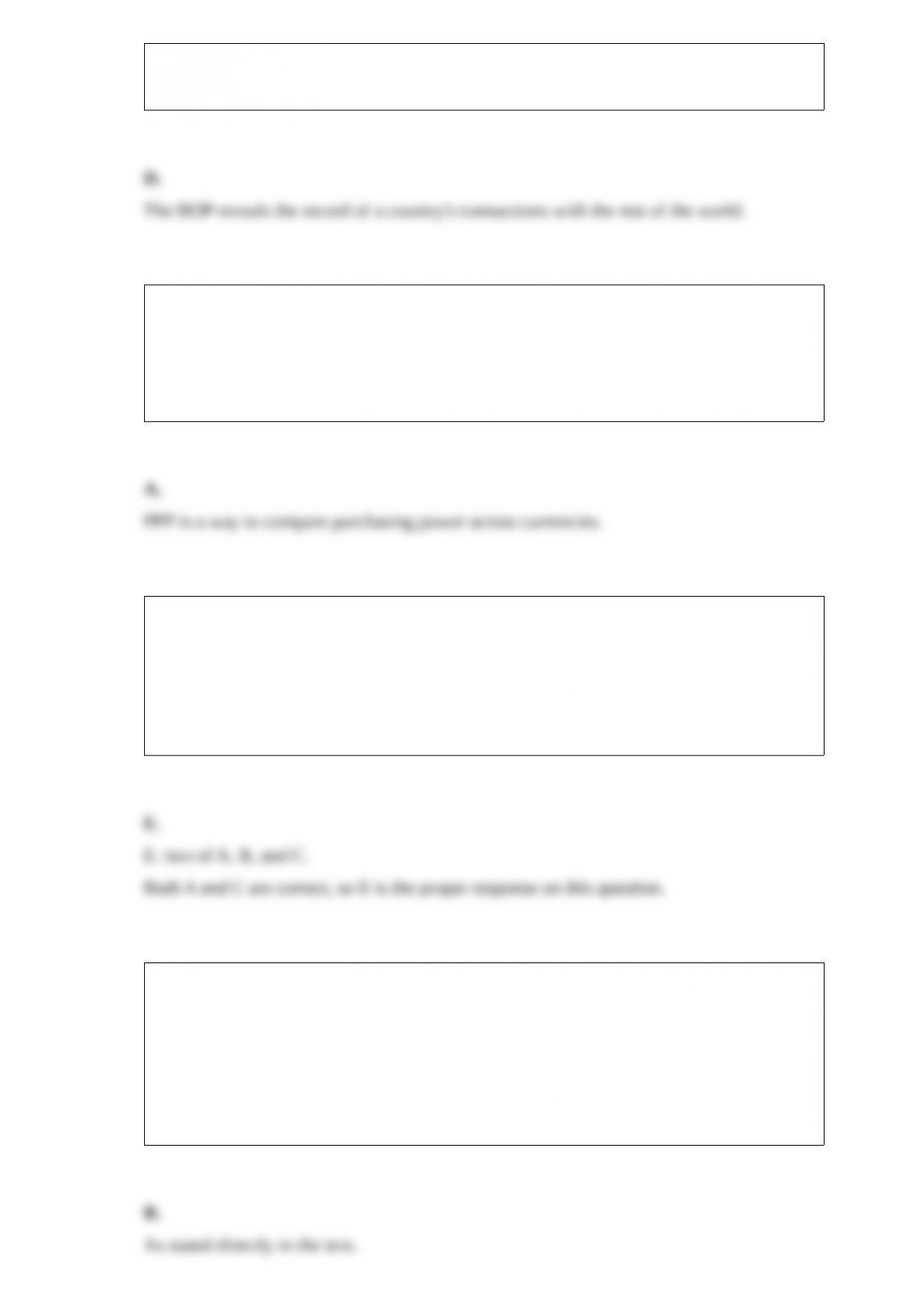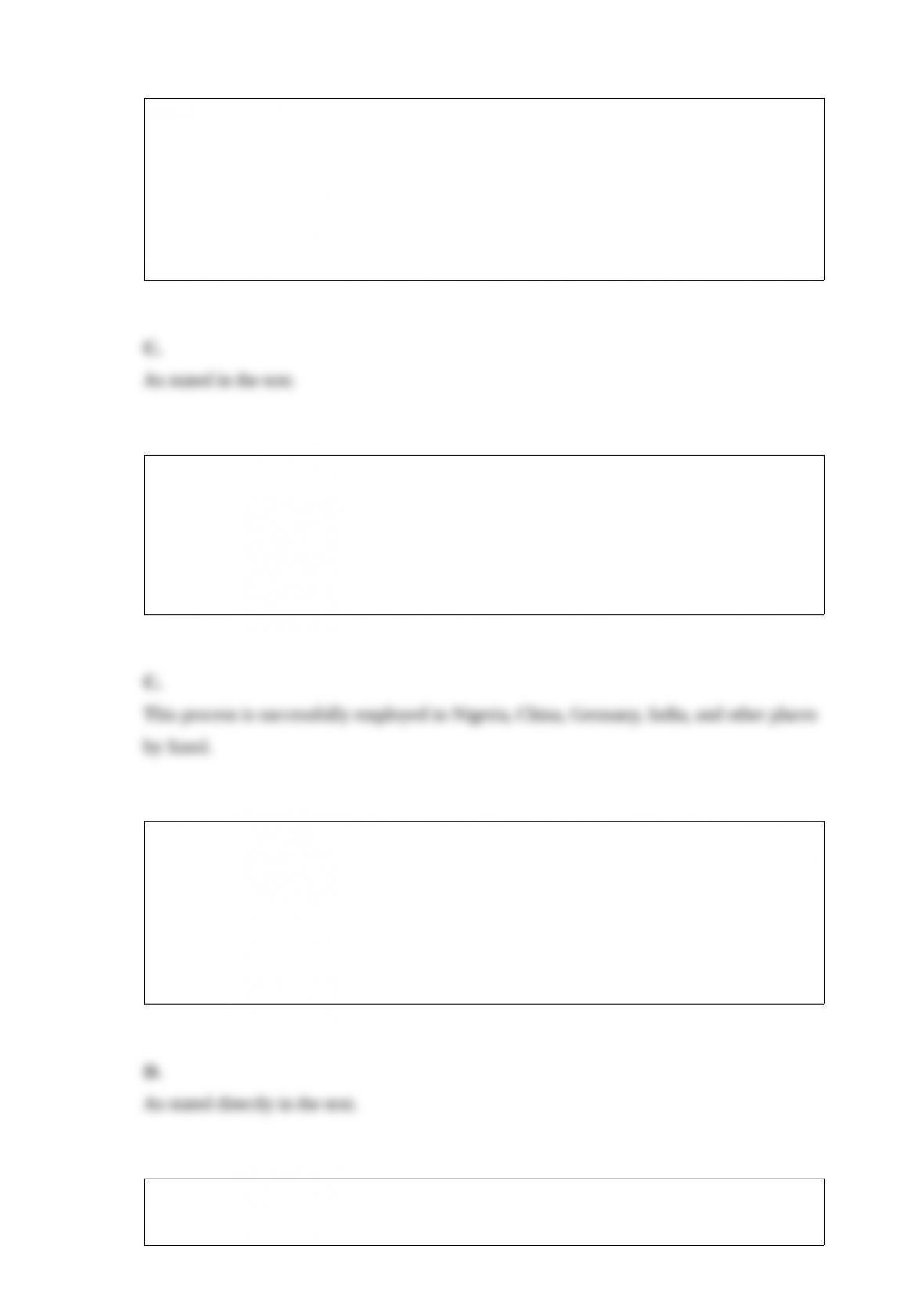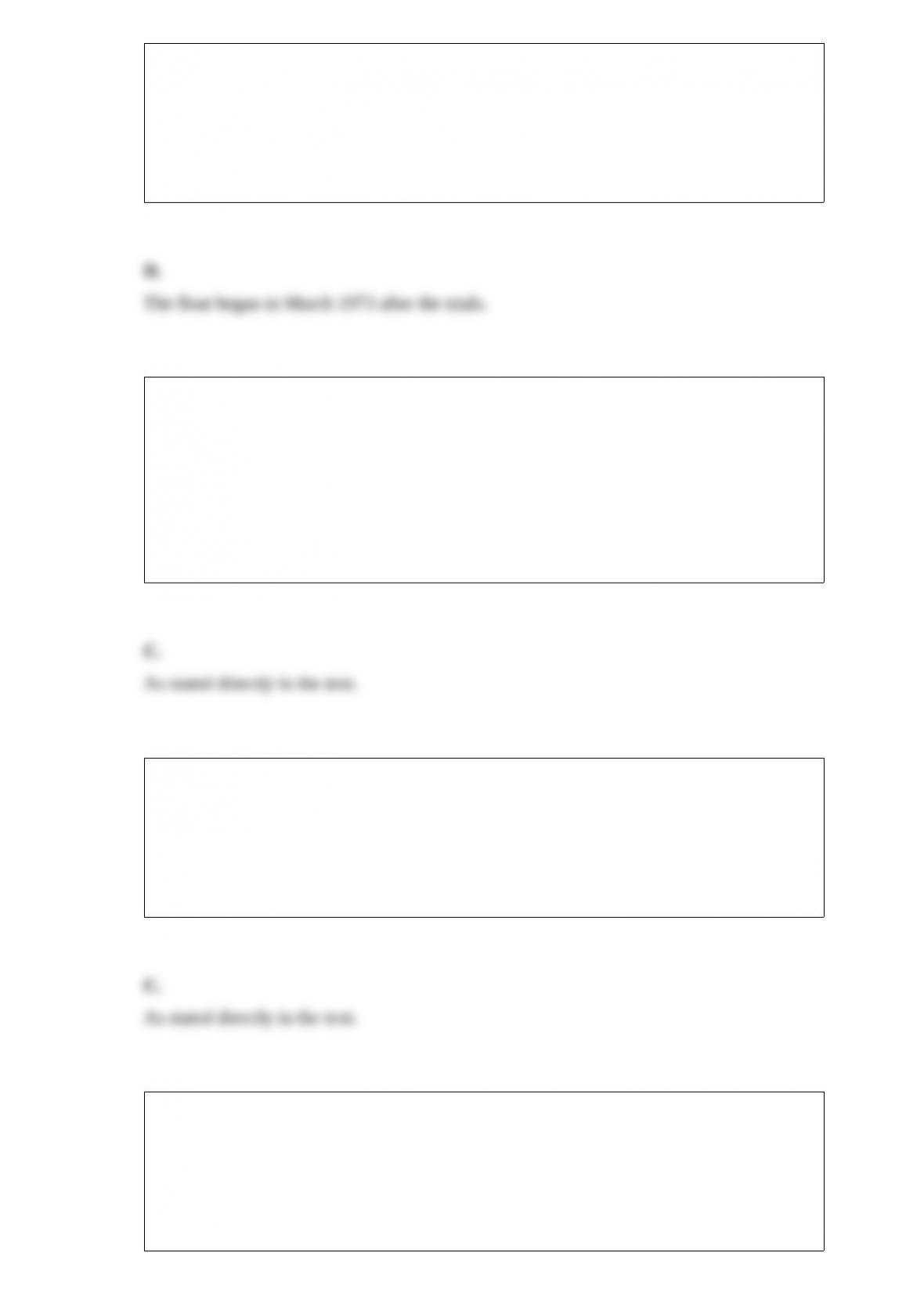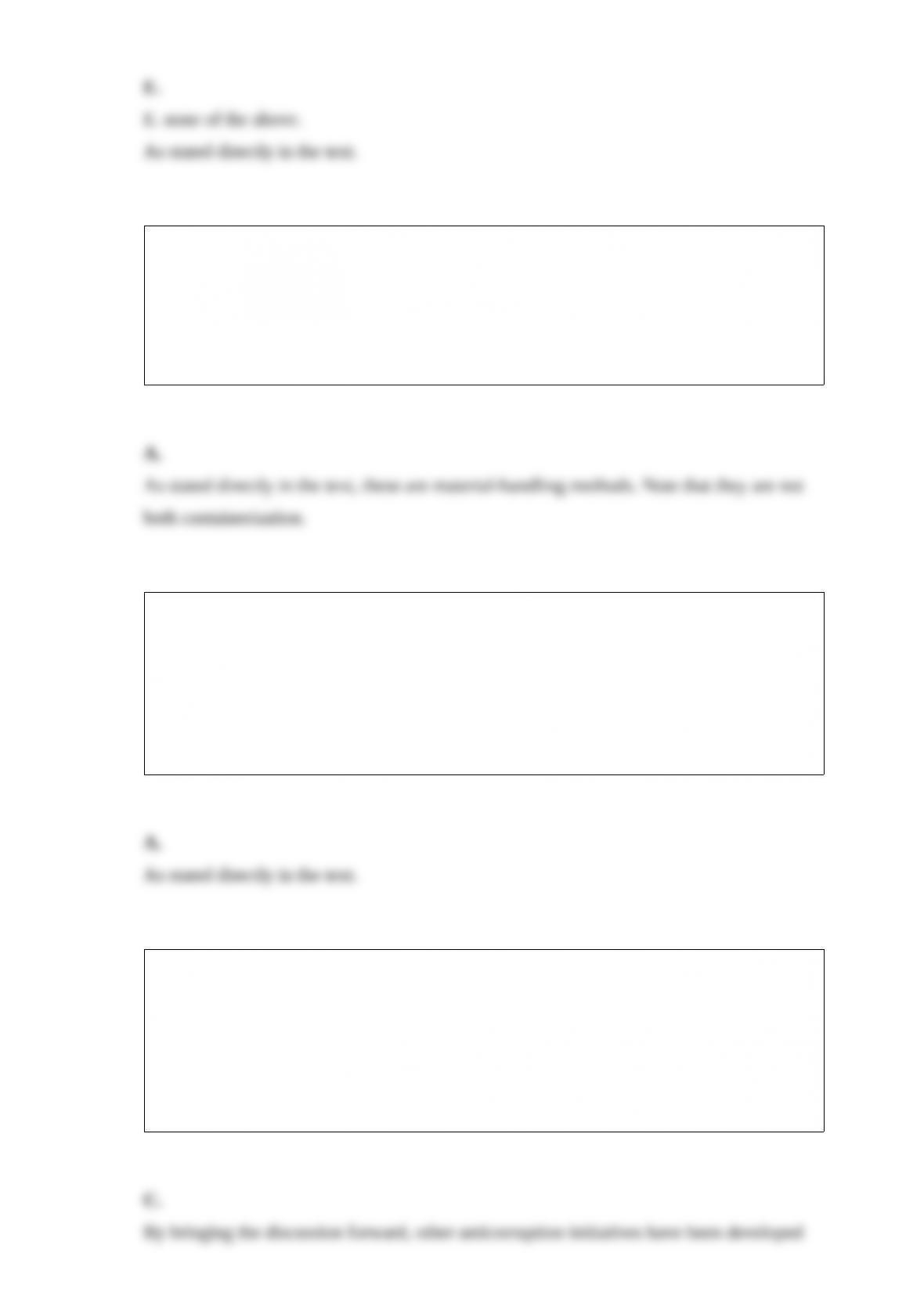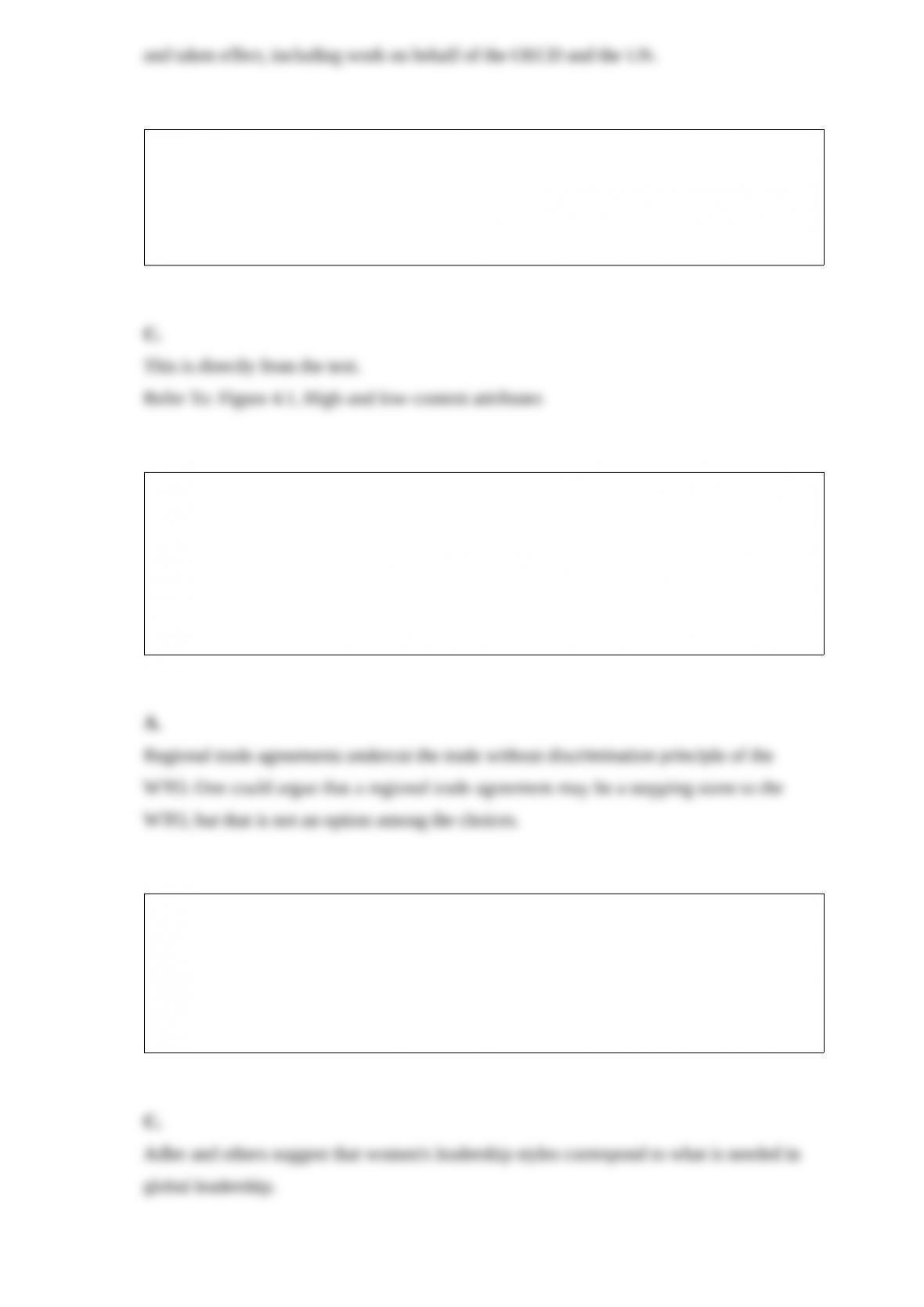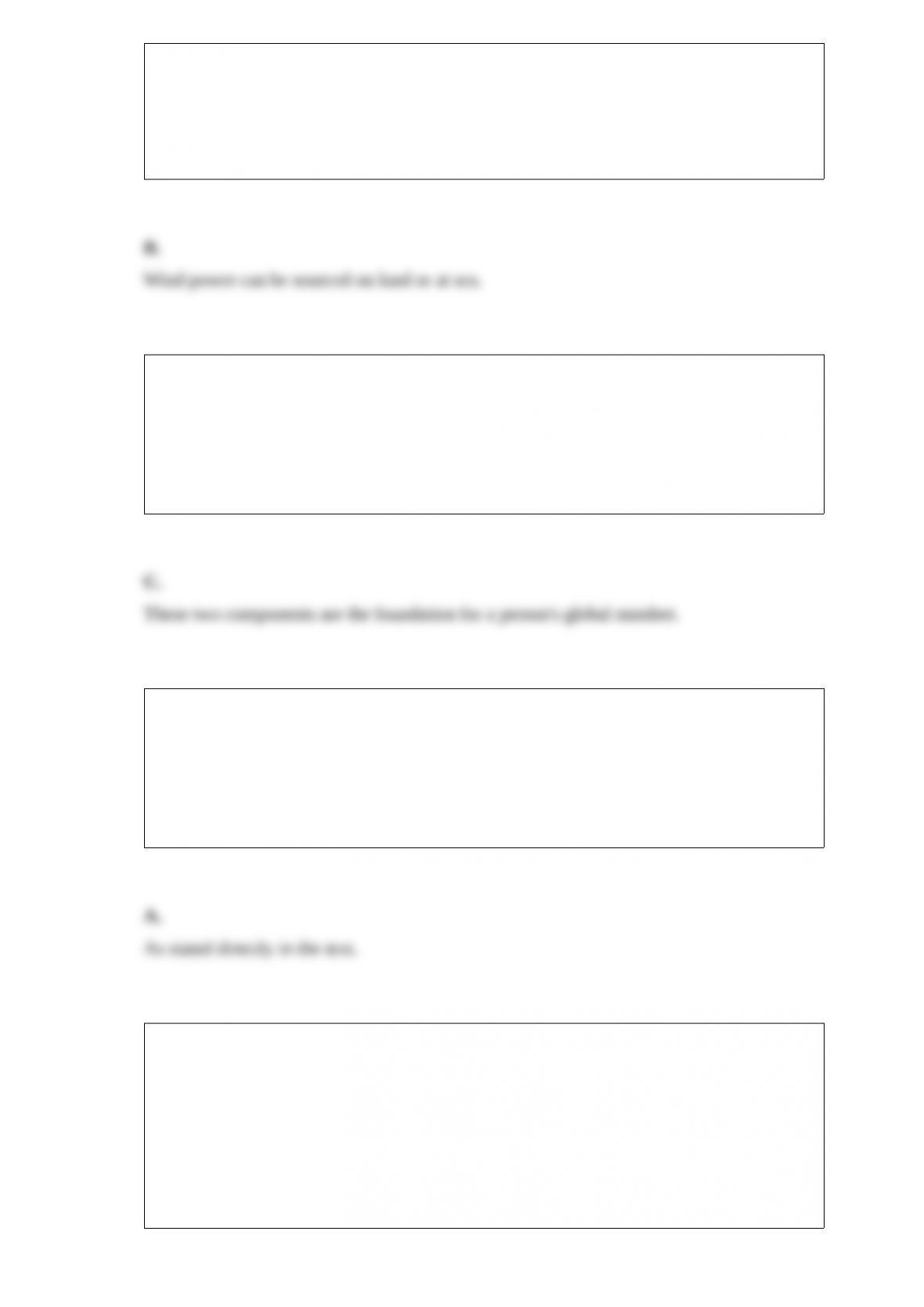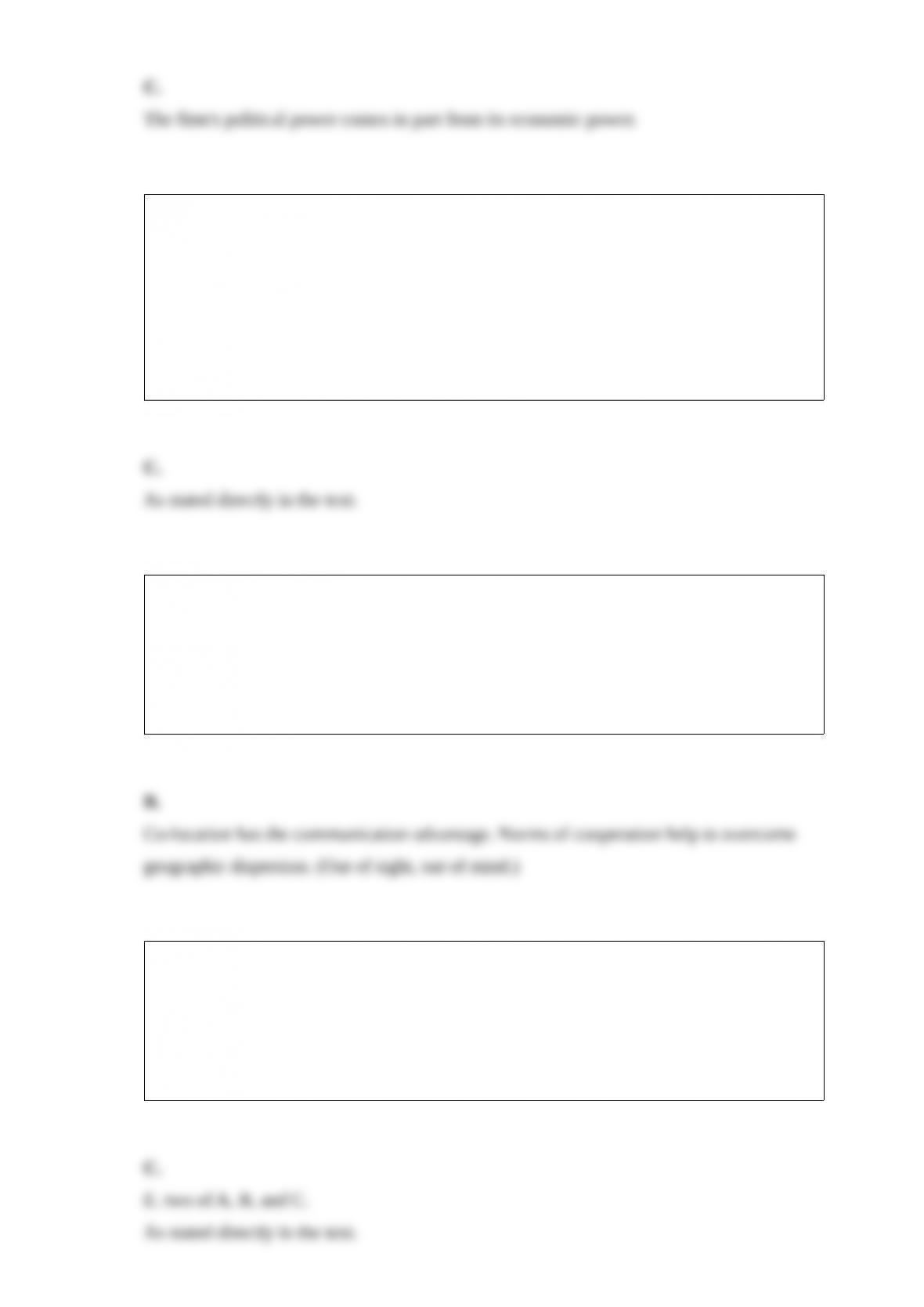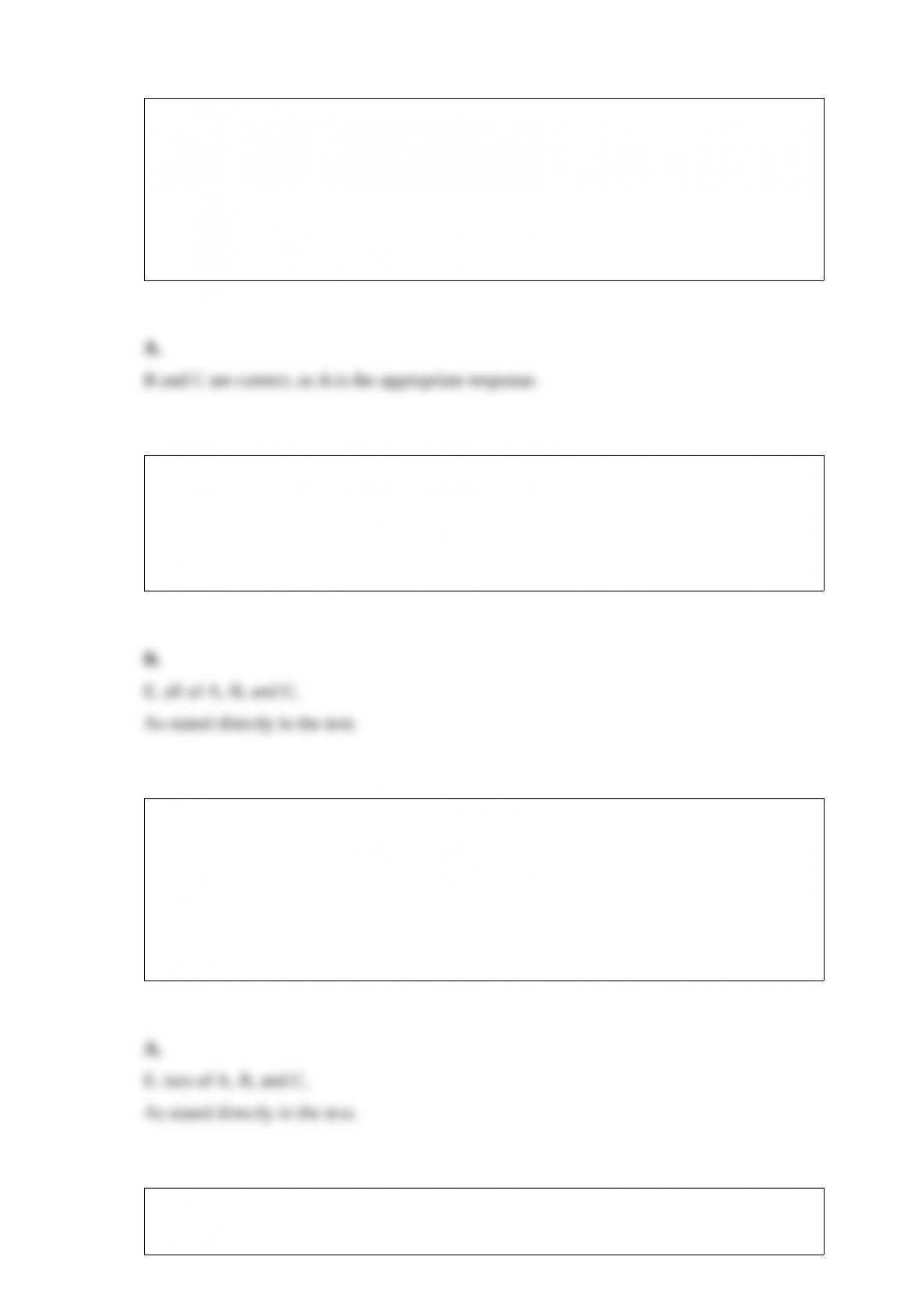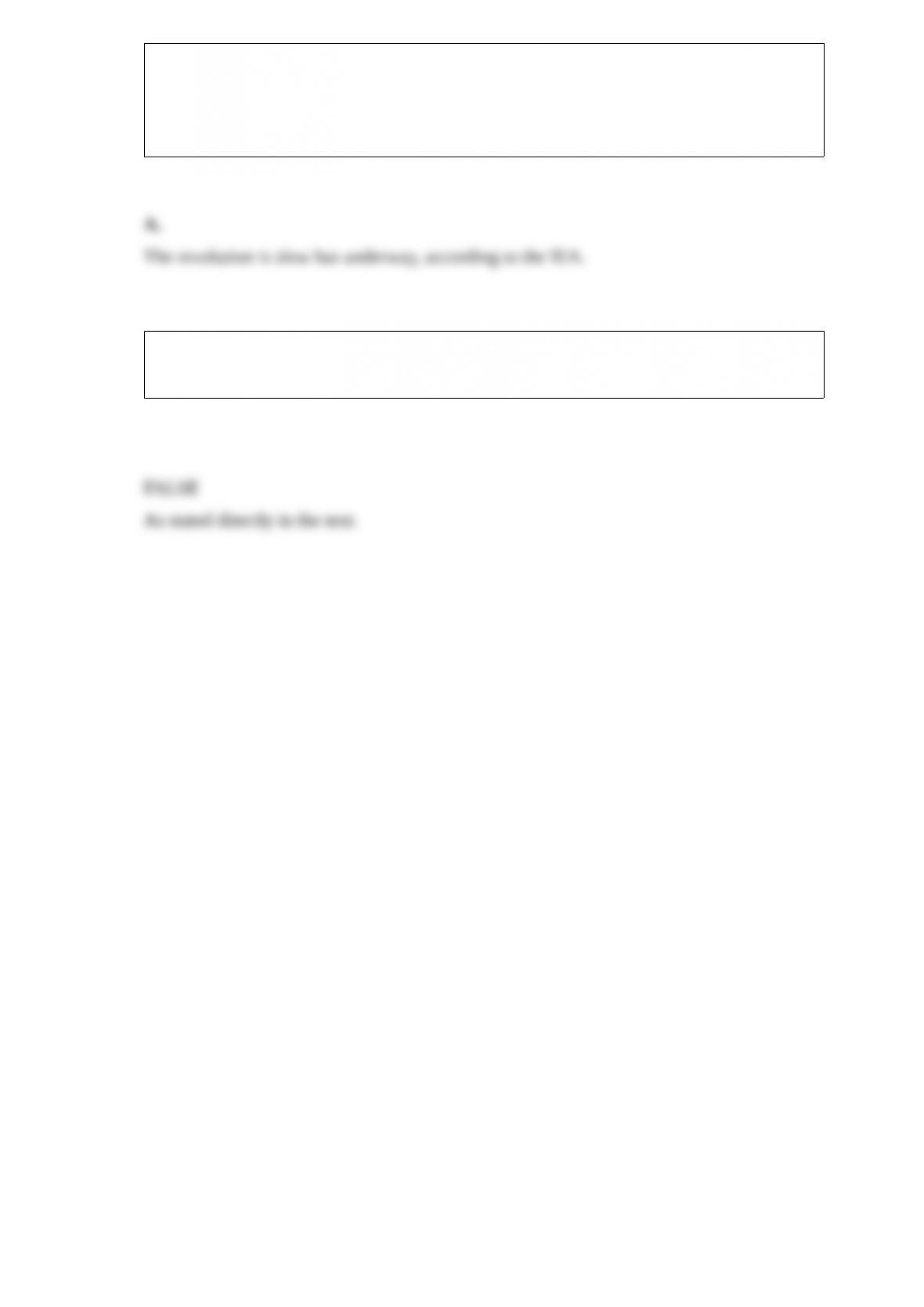B. established by the major trading nations in 19721 after Nixon closed the gold
window.
C. implemented in tandem with a reintroduction of the gold standard.
D. established after several trials in which central bankers set rates incorrectly and
speculators corrected them in the markets, and it was formalized after the fact in the
IMF's Jamaica Agreement.
Adam Smith claimed that:
A. governments, not market forces, should determine the directions, volume, and
composition of international trade.
B. a nation could trade advantageously if it had a comparative advantage.
C. market forces, not government controls, should determine direction, volume, and the
composition of international trade.
D. customers' tastes are affected by income levels.
E. two of the above.
To sum up international trade theory, we can say that the primary reason for trade is:
A. the increase in OPEC oil prices.
B. governments want to accumulate money.
C. the existence of price differentials among nations.
D. the creation of new nations from former colonies.
E. none of the above.
A contractual arrangement in which one firm grants access to its patents, trade secrets,
or technology to another for a fee is:
A. an exporter.
B. a sales company.
C. a management contract.
D. a joint venture.
